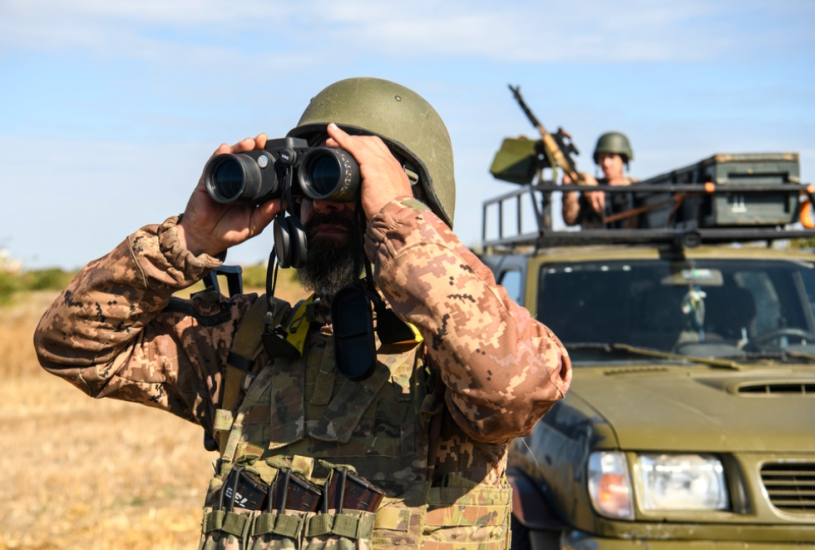A new report from the Royal United Services Institute (RUSI), warns NATO against replacing traditional firepower with drones or uncrewed aerial systems (UAS), but says counter drone defences are more vital than ever.
The defence and security think tank says an “over-reliance on drones” is causing significant problems for the Armed Forces of Ukraine and that western militaries should avoid doing the same. RUSI says that relying too heavily on drones plays to Russia’s strengths. “Russian forces currently field the most formidable counter-UAS (C-UAS) or ‘counter-drone’ capabilities on earth,” the report states. “They have a wide range of dedicated C-UAS electronic warfare systems, modified infantry weapons and short-range air defence (SHORAD) systems integrated at all levels of their ground forces. These have already been refined over three years of high-intensity combat experience against a steadily increasing and evolving Ukrainian UAS and OWA drone threat.”
RUSI adds that Russian vehicles and fighting positions today benefit from “now ubiquitous netting, spaced bar armour, padding and short-range jammers to reduce vulnerability to FPV drones”. In addition, the report notes that Russian infantry receive instruction on how to engage drones as a central part of their limited training before being sent to the frontlines.
Because of Ukraine’s reliance on drones, Russia is focusing steadily greater attention on refining its C-UAS capabilities, which are already substantial, posing a potential warfare imbalance in the years to come.
“If NATO nations have to fight Russian forces directly in the coming years, they will face a force that has had even more time to further improve its already formidable C-UAS capabilities compared to the already very challenging operational picture facing Ukrainian forces today,” RUSI says.
The think tank does not suggest replacing drone warfare entirely but balance is key. Defensively, RUSI underlines the importance of C-UAS capability development for NATO and Europe. “This is because Russian forces already deploy even more UAS than Ukrainian forces, and are also rapidly innovating how they combine them with loitering munitions, UAV-based battlefield ISR, electronic warfare, and the ever-present artillery.”
For more information
Image: Shutterstock




